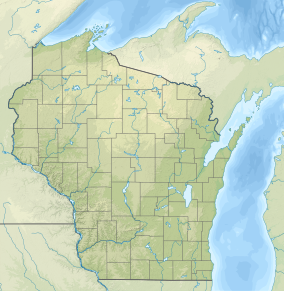| Pioneer Park Historical Complex | |
|---|---|
 Train station at Pioneer Park | |
| Location | Oneida, Wisconsin, United States |
| Coordinates | 45°40′00″N89°20′00″W / 45.66667°N 89.33333°W |
| Established | 1932 |
| Governing body | City of Rhinelander |
| Website | Pioneer PArk Historical Complex |
Pioneer Park Historical Complex, also called Rhinelander Logging Museum, Rhinelander Schoolhouse Museum is a combination open-air museum of historical structures in Rhinelander, Wisconsin, United States. It is listed as a city park, managed by a non-profit organizations. The structures include log cabins from the fur trade era, buildings from and stores and public buildings from the late nineteenth century. [1]
Contents
The museum houses displays related to the Hodag, a fictional animal photographed and distributed in 1896 by Eugune Sheppard. The character has become the mascot associated with Rhinelander. [2]

